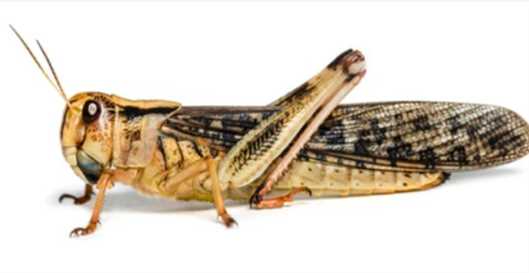Gene Editing in Locusta Migratoria

Locusta migratoria is an important crop pest in the family Locustidae of the insect order Orthoptera, commonly known as grasshoppers. There is only one species, but nine subspecies are known worldwide depending on their geographical distribution. An adult locust can consume its own weight (several grams) in fresh food per day. For every million locusts, one ton of food is eaten. The migratory locust is an edible insect. On 2 July 2021, the European Food Safety Agency published a scientific opinion stating that the consumption of migratory locust in frozen, dried or grounded state is safe for humans.
Our Services for Gene Editing in Locusta Migratoria
Although several control tools are available to reduce the damage of locusta migratoria, a more scientific approach to control locusta migratoria is needed due to the gradual rise of resistance of locusta migratoria or the damage of chemical pesticides to the environment and other non-targets. Lifeasible provides gene editing services for locusta migratoria with zinc-finger nucleases (ZFNs), transcription activator-like effector nucleases (TALEN) and CRISPR/Cas9 to control their reproduction and reduce the harm caused by locusta migratoria.
| Editable genes |
Relevant traits exhibited after editing |
| LmCesA1 |
- We can knockdown the LmCesA1, make locusta migratoria less tolerant to certain chemical drugs, and improve the drug sensitivity of locusta migratoria and control the population of locusta migratoria.
|
| LmIntegrinβ-PS |
- LmIntegrinβ-PS is required for wing morphogenesis and development during molting by stabilizing cell adhesion and maintaining the cytoskeleton of these cells. We can knockdown the LmIntegrinβ-PS resulting in incomplete wing development in larvae.
|
| LmCYP303A1 |
- We can increase the expression of LmCYP303A1 make defective larval molting.
|
| LmCDAs |
- We can edit LmCDA1 and LmCDA2 to affect the development and differentiation process of titinous tissue in the foregut and hindgut cuticle of locusta migratoria.
|
| serpin7 |
- We can knockdown the serpin7 gene make a significant upregulation of the activity of polyphenol oxidase and a significant reduction in diapause rate under the short photoperiod. This can be a future strategy for the reproductive control of insect pests.
|
| immulectin-1 |
- We can reduce the antifungal immunity by knocking down immulectin-1 in locusta migratoria.
|
| LmDDX3 |
- We can knockdown the LmDDX3 lead to a reduced vitellogenin (Vg) expression in fat body via partially at least, the JH signaling pathway, and cause an upregulation of vitellogenin receptor (VgR) in ovary, and thus block the ovarian development and oocyte maturation.
|
Advantages
- Editing drug resistance-related genes to make locusta migratoria less tolerant to certain chemical drugs.
- Editing some immunity genes to affect immune system of locusta migratoria.
- Editing ovarian-related gene to block the development and maturation ovarian in locusta migratoria.
- Editing growth and development-related genes like to affect wing morphogenesis and molting development or other process of locusta migratoria and control this organism.
Lifeasible offers three means include ZFNs, TALEN and CRISPR/Cas9 to edit some genes through affecting the development and maturation of locusta migratoria to control this pest. If you are interested in our services or if you have any questions, please click online inquiry for more detailed information.
Reference
- Wang, J; et al. The RNA helicase DDX3 is required for ovarian development and oocyte maturation in Locusta migratoria. Arch Insect Biochem Physiol, 2021, 106(3): e21775.
For research or industrial raw materials, not for personal medical use!
